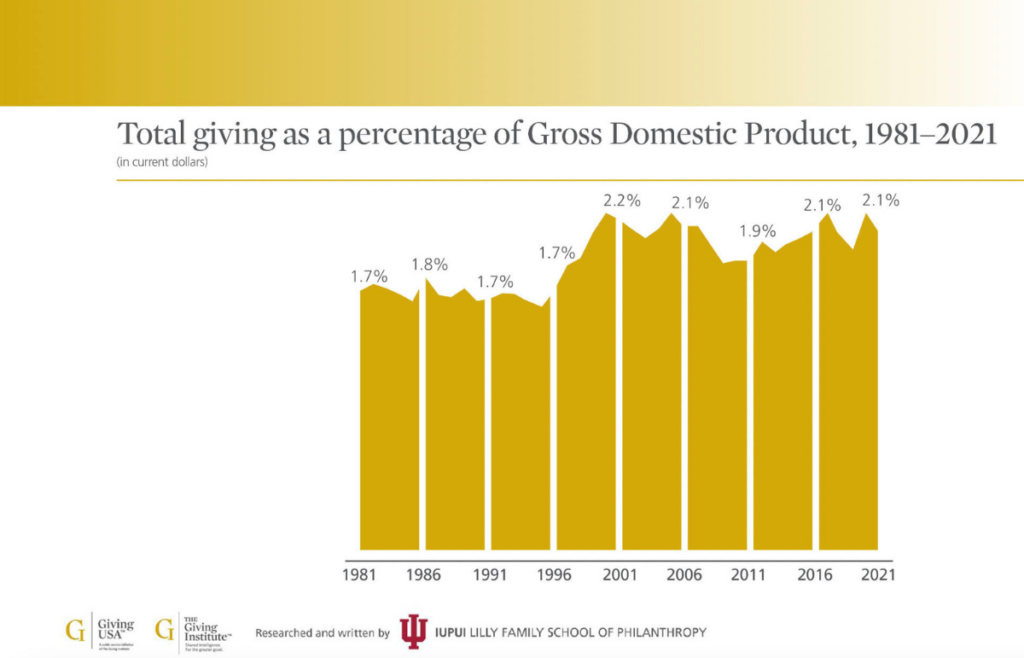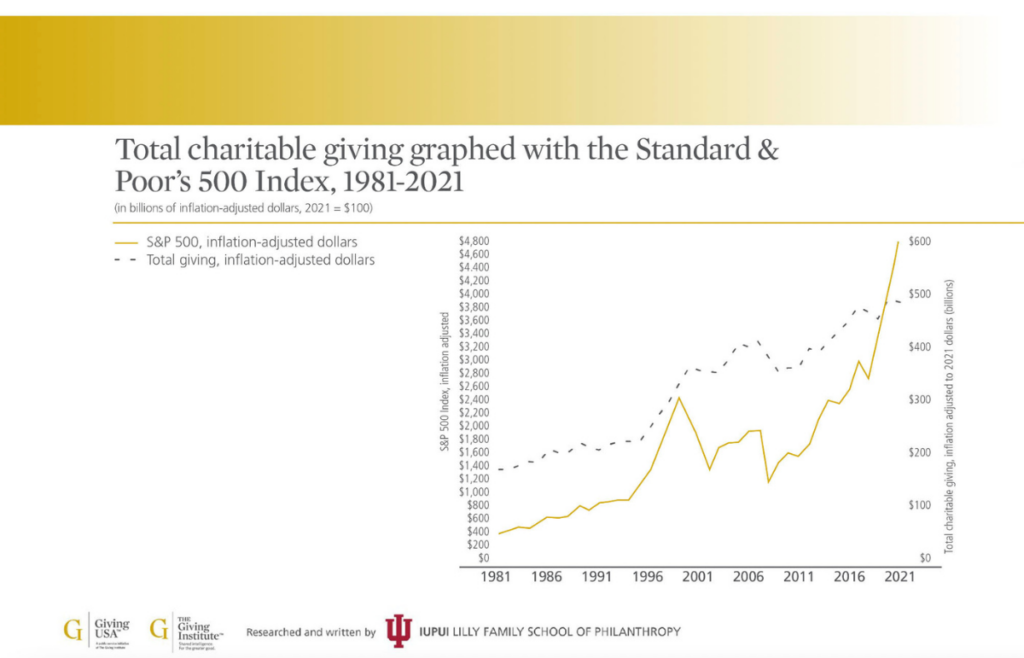 David H. King, President & CEO at Alexander Haas
David H. King, President & CEO at Alexander Haas
As we came to the end of the roller coaster that was 2022 – and for the record, I hate roller coasters, have since I was a kid – and as many of us were in planning mode for 2023, I was drawn back to some of the data points that Giving USA tracks. I do this every year because, as the adage goes, history repeats itself. So, while there are no guarantees, there is a high probability that under similar circumstances, things that happened in the past will happen again. And there are warning signs that we need to be especially strategic in 2023 as we may face challenging headwinds to philanthropy.
If you follow Giving USA or have seen my presentation of the data at any point, then you know that the performance of the S&P 500 is highly correlated with giving, in a leading-indicator fashion. As most of you know, 2022 was not kind to the S&P. On January 3, 2022, the S&P 500 stood at 4,796.56. As I write this, the S&P sits at 3,996.69, a decline of 799.87 or a decline of nearly 17%. Historically, as you can see from the chart below when the S&P goes into decline, philanthropy in the US follows it.
The Giving USA data also gives us a glimpse into what happens to giving during a recession. I don’t want to get into an argument about the definition of a recession. But the chart below has historically relied on the metrics of two negative quarters of GDP growth. So, rather you think we are in a recession or not, the data below is comparing apples to apples. So, let’s just say this is a chart of what happens to giving in years when we have two negative quarters of GDP growth, and not get into naming it. As you can see, giving has historically declined in years when we had two negative quarters of GDP growth.

I know you are reading this thinking, “Thanks David, how uplifting as we move into the new year.” But I share this not as a warning of doom and gloom, but as the basis for some advice for 2023.
First, I want to point out that even in the 2008-09 timeframe, when both the S&P and GDP were extremely negative, giving did not stop. Yes, fundraising was harder, and some sectors (Arts for example) were hit quite hard at that time. But people still gave. And one of the lessons that we at Alexander Haas learned from that was, no matter what is going on, DO NOT STOP ASKING DONORS TO SUPPORT YOU. I wrote about this back then and I’ll reiterate it now. Donors were smart enough to end up with money, so let’s assume they are smart enough to make their own decisions about giving it away and make sure we give them that opportunity.
Second, and related, your needs do not evaporate simply because the economy is not good. If you have true, important, mission-critical needs, then you need to be moving forward to fund those. Period. If your “needs” can be put on the shelf for two years while you wait for the economy to improve, then they really were not “needs” to begin with. They were wishes, aspirations, or whatever. But true needs can’t wait, and you need to be pushing to meet them. So many organizations had to delay capital campaigns because of the pandemic and cannot afford to put them off any longer. So, don’t be shy about what you do or raising money to do it better.
Finally, when it comes to annual fundraising, 2023 may be the year to move away from a business-as-usual approach. I’m not saying do anything crazy or abandon things that have worked. What I’m talking about is your messaging. I see a lot of recycled and uninspiring messaging in annual funds. In addition to my work as a consultant to nonprofits, I’m a donor to several, and a “prospect/suspect” for many more. While most people ignore those prospect/suspect appeals, my professional curiosity drives me to look at them. Most are not compelling me to become a donor. They don’t tell me clearly the problems that my gift can help solve. They don’t convey the effectiveness of the organization or the outcomes for the people/things the organization is serving. In some veiled language, they ask me to give money because they need it. Everyone needs money (yes everyone, even Elon Musk wants more) and that fact does not distinguish you in any way. Nor is keeping the lights on a compelling appeal. To the point, 2023 may be a good time for you to rethink how you are messaging donors and to make sure that you are doing it in the most compelling way possible.
I’m generally an optimist – I don’t think you can work in the nonprofit sector for 35 years if you are not an optimist. Everything that we do is done with an eye toward making things better and if you’re not an optimist, you’re just not going to thrive doing that. But, as many who have worked with me professionally or in a volunteer capacity will attest, I’m also a data-driven decision-maker. So, yes, when I look at the data, I most definitely see challenges. But the optimist in me is certain that they can be overcome.



